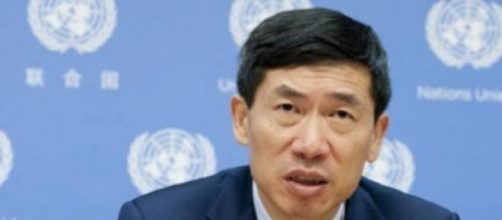Since the Millennium Development Goals were set in 2000, many parts of the world have certainly come a long way. UN secretary general Ban Ki Moon was recently promoting the #action2015 campaign which he is likely to keep doing in the run up to the sustainable development summit in New York in September. As part of ongoing assessments, the development agency of the United Nations has just released the latest report on MDG’s progress in the Asia Pacific region.
The report demonstrates impressive achievements in the area. Between 1990 and 2012, the proportion of the population living on less than $1.25 a day has decreased from 53% to 14%.
For 2015 it is even expected to reach as low as 12%. More than this, two-thirds of the countries in the region have halved the proportion of population without access to drinking water. The rate of primary-aged children completing school has reached a really satisfying level and so has gender parity.
However, despite these incredible results, much remains to be done. Over 569 million people living with less than $1.25 a day is a reminder of the need for a post-2015 development agenda. 21 million children have still no access to school and a striking 75 million are underweight. In 2012, 1.2 billion people in rural areas had still no access to basic sanitation facilities, with 480 million in the urban counterparts.
Looking forward to the summit in September, the sustainable development agenda will need to include practical solutions if the job of ending poverty is ever to be completed. The report has put forward the key role technology should play in the post-2015 era. Calling on all developed countries to facilitate access to new and innovative technologies, the report stresses its importance in the region. “To continue to effectively deal with our complex development challenges and to achieve the Sustainable Development Goals, we need to focus even more on data, technology and innovation that can help us attain transformational impact on the lives of the poor and excluded groups in society” commented Mr Haoliang Xu, UNDP’s Assistant Administrator and Director for the Regional Bureau for Asia and the Pacific.
The report affirms that the MDG’s have created a momentum which will require three key areas of implementation. The benefits of technology need to be extended to as many people as possible. In return this will require the mobilisation of a consequent amount of financial resources. Lastly, as the secretary general has already mentioned, the goal this time is not only to end poverty, but to leave no one behind. Therefore, a comprehensive statistical monitoring system will be required in order to guarantee that everyone has been accounted for.
A variety of reports are still expected to be released as the summit in New York gets closer. Even if it remains to be seen what actions will be agreed upon in practice, we all ought to be hopeful since, learning from the MDG’s, we might well be the first generation with a real chance to end poverty.

